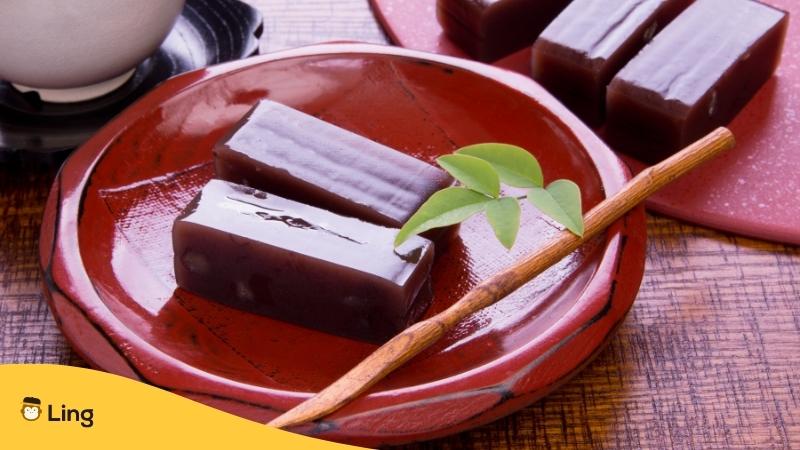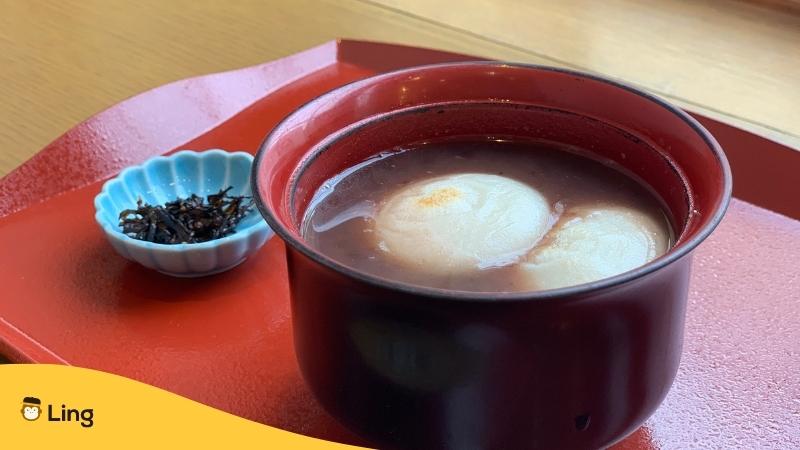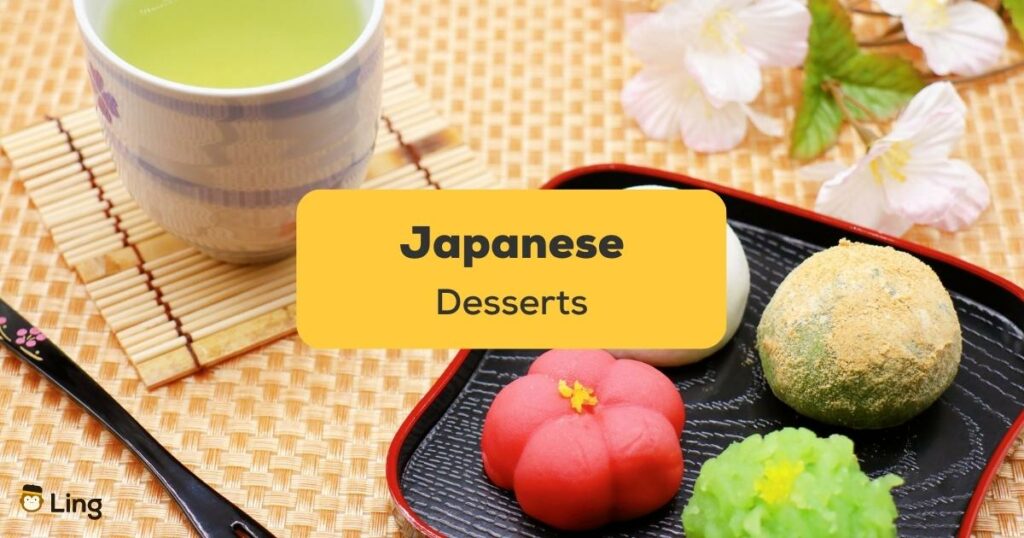Beautiful and elegant Japanese desserts are just another way Japan’s rich culture and traditional cuisine can wow you!
If you’re a foodie or have a sweet tooth, Japan is paradise on earth. Creating genuinely memorable Japanese desserts (デザート, dezāto) take more than merely whipping up some sugar and serving it to us. Conversely, the fact that the Japanese people put their souls, thoughts, and cultures into their sweets elevates them to a whole new level.
We’re delighted to share this blog post that follows our enthusiastic recommendations for some classic Japanese desserts. For those of you now studying Japanese, be sure to write down all the terminology we offer so you can avoid embarrassing situations like ordering the wrong name for a dessert in Japan when you visit.
What Is Wagashi, 和菓子?
It’s a term used to describe a traditional Japanese dessert that the locals have developed for a thousand years to go along with their beloved green tea. Wagashi only use plant-based ingredients, so naturally sweet fruits and nuts were utilized as sweets since sugar was costly in the past. Combined mochi, anko, and fruit make up this tasty treat.
Wagashi are traditional Japanese sweets eaten during celebrations. It’s common practice to present these to guests as gifts of appreciation on festive occasions.
Amazing Traditional Japanese Desserts
As we’ve already established, red bean paste is frequently used as the basis of traditional Japanese sweets. Here, 10 deliciously authentic Japanese desserts are listed below.

1. Daifuku – 大福
Daifuku is a Japanese confection consisting of a tiny circle of sweet bean paste or other fillings in a round of soft rice cake or mochi. Strawberries, beans, and ice cream are the popular fillings used in daifuku. A slight coating of potato flour has been applied to their surfaces to prevent them from sticking together.
2. Namagashi – 生菓子
Namagashi, the traditional Japanese dessert most closely linked to wagashi, was already described. It’s made with rice flour and a sweet bean paste filling. These seasonal treats take careful, hand-formed shapes representing the season and are served during the tea ceremony.

4. Dango – だんご
Dango is little steamed sweet rice dumplings that are chewy and delicious. It’s used glutinous rice flour. You can get them skewered with a stick and covered in a sweet soy sauce or bean paste. Other sweets, such as anmitsu and oshiruko, also incorporate dumplings.
3. Dorayaki – どら焼き
Do you know about the Doraemon anime series? Doraemon, a beloved character from the anime series, particularly enjoys dorayaki. You’ll find a layer of sweet red bean paste between two pancakes. Variations on the traditional dorayaki may use custard cream, whipped cream, and matcha-flavored cream as a filling.
5. Anmitsu – あんみつ
Brown sugar syrup tops sweet bean paste, rice flour dumplings, fruit, and cubed kanten jelly in the Japanese dessert known as anmitsu. Japanese people also add a scoop of ice cream, which becomes “cream anmitsu.”

6. Yokan – 羊羹
Yokan, a hard jelly-like snack consisting of sugar and kanten agar, is sweet and jelly-like. You may choose from various tastes, including azuki beans, black sugar, and green tea. Yokan bars are often offered as single servings around the size of a pack of gum. Larger bars are meant to be split into smaller pieces.
7. Taiyaki – たい焼き
It’s a fish-shaped delicacy prepared from a pancake-like batter. A traditional filling for taiyaki is sweet bean paste. Nowadays, it’s common to find taiyaki stuffed with custard cream, chocolate, or cheese. When the batter is still crunchy, taiyaki is at its best!
8. Monaka – 最中
Like taiyaki, Monaka is comprised of wafer molds filled with sweet bean paste. The wafer shells range from plain, spherical ones to those with elaborate patterns. Nowadays, a common variation on the traditional monaka is to stuff it with ice cream.

9. Oshiruko – おしるこ
Oshiruko is a dessert soup combining a hot sweet bean soup with rice flour dumplings or grilled mochi. You may choose whether you want a smooth or lumpy red bean soup.
10. Manju – 饅頭
Manju is tiny buns filled with sweet bean paste or another sweet filling, then steamed or baked. Traditional ones have a uniformly smooth exterior and a spherical shape.
Words For Desserts And Snacks In Japanese
After exploring traditional Japanese desserts, now let’s move on to the vocabulary for basic desserts and some of the most popular Japanese desserts in this section.
What Is Your Favorite Japanese Dessert?
Since you made it this far, we assume you found something in the blog that you want to try on your future vacation to Japan. Desserts in Japan can be classified as either traditional or fusion. When there are so many delicious sweets to choose from in Japan, it might be challenging to narrow down your options. But at least you can now have the name of a unique Japanese dessert to eat in Japan and a refreshing treat whenever you want.
Visualize yourself learning Japanese in the comfort of the hotel or home while munching on authentic Japanese sweets. Yes, you can do that with Ling!
Learn Japanese With Ling Now!
With Ling, you can study languages with the utmost convenience whenever and wherever you choose. Furthermore, the app allows you to customize your timetable, letting you stay on track whenever convenient. Our mission is to enable everyone, no matter where they are in the globe, to have access to Ling and its library of 60+ languages, including Japanese, which can be studied on any smartphone. We at Ling believe that learning a new language should be a pleasurable experience, which is why we provide various engaging learning tools, including games, puzzles, and conversational AI. If you want to get serious about your studies, this is the thing to do.
Most Japanese learners chose Ling to help them succeed, so why not join them? Download the Ling app from Google Play Store and Apple App Store now, and prepare to be fluent in Japanese soon!



















